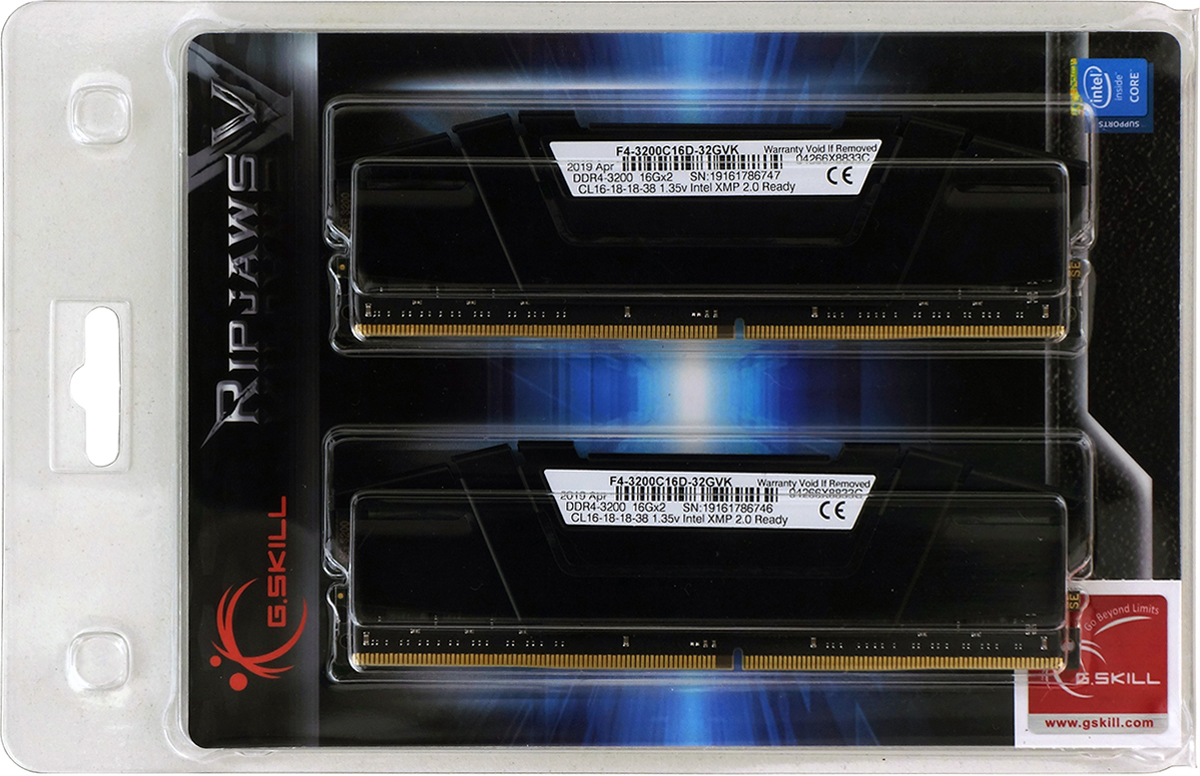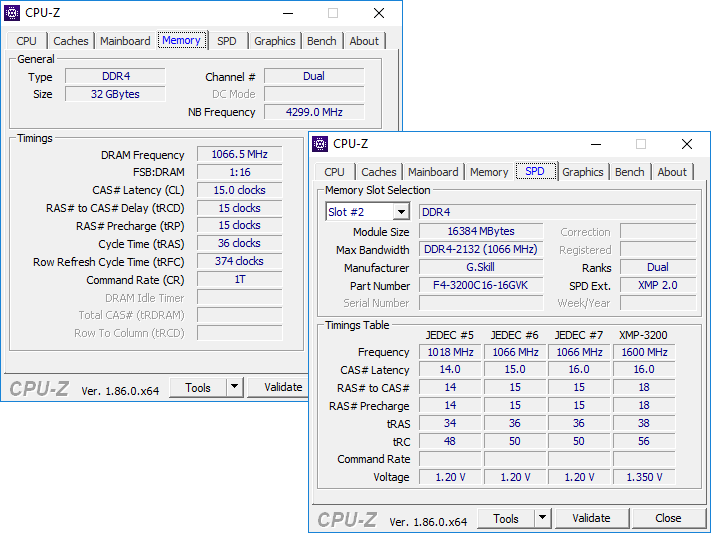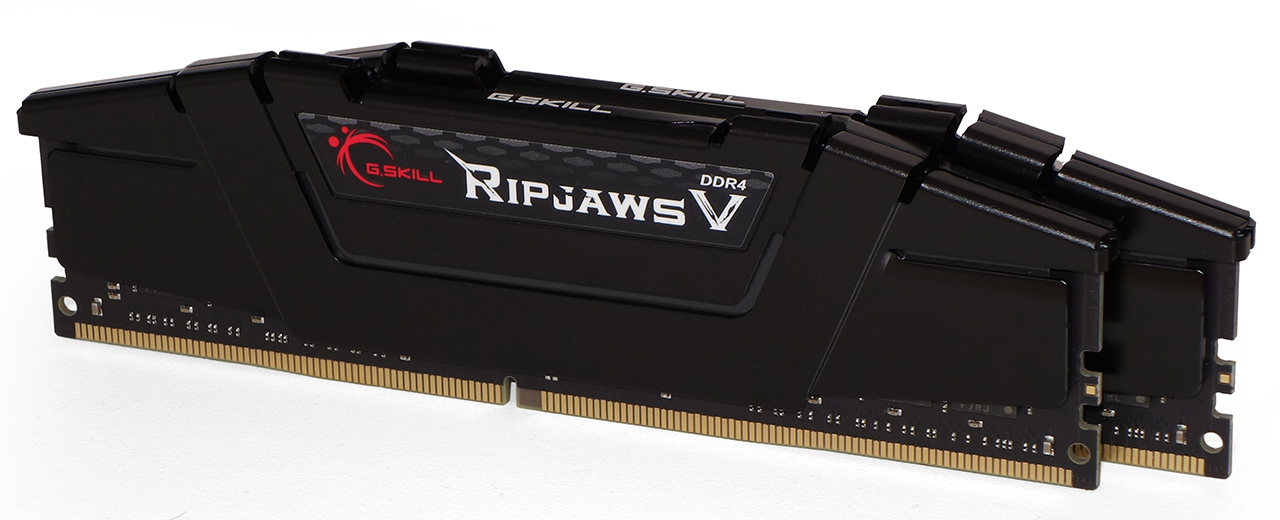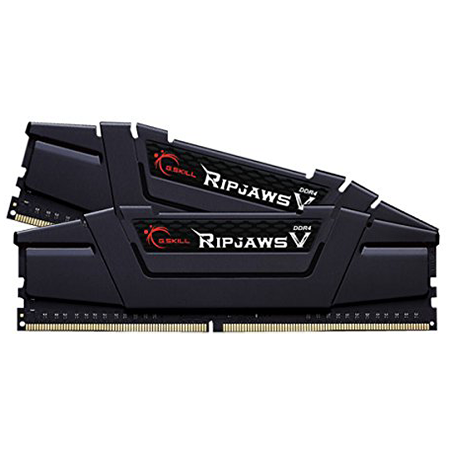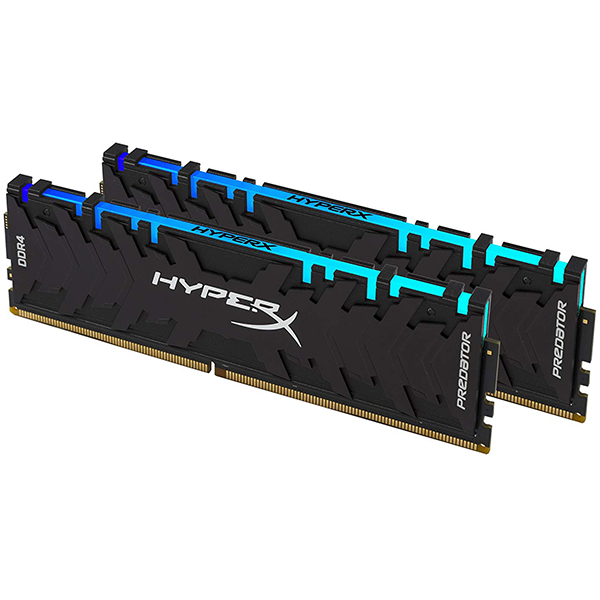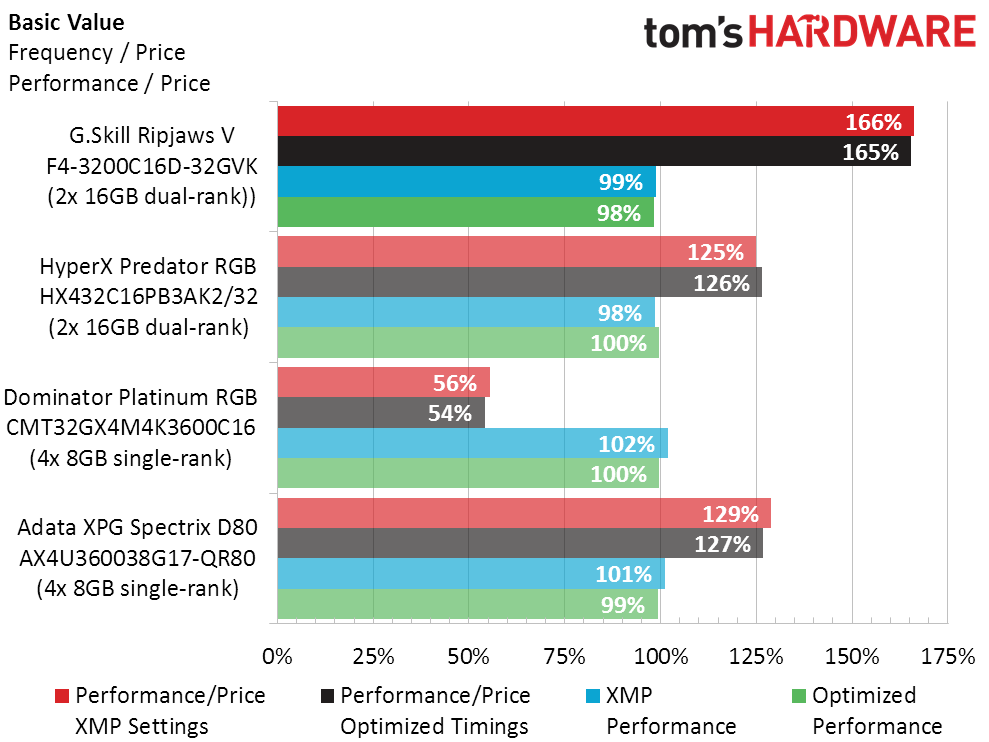Tom's Hardware Verdict
G.Skill’s Ripjaws V DDR4-3200 C16 2x16GB kit offers great DDR4-3200 value at XMP settings, but not much else. That should make it the perfect kit for many of our value-minded builders looking for this much memory.
Pros
- +
Inexpensive for its XMP setting
- +
No lighting to annoy the anti-RGB crowd
Cons
- -
Little tuning capability
- -
No lighting to appease the RGB crowd
- -
No fallback settings between DDR4-3200 and DDR4-2133
Why you can trust Tom's Hardware
The biggest complaint we hear from the anti-RGB crowd is that they don’t want to pay for the RGB hardware that they don’t want to use. But the recent unlit memory kits that have crossed our desks have all been premium models that didn’t drive the cost point home. G.Skill's Ripjaws V DDR4-3200 C16 shows us that leaving off RGB really can lead to a significant cost savings, with few other serious sacrifices.
When you’ve finally decided that 16GB isn’t quite enough for your multitasking or rendering needs, picking an upgrade might start with filling the two empty slots on your board with another 16GB. But that’s not going to work for anyone whose motherboard has only two slots. Those users are the market for 2x16GB kits, which we've been focusing on in our RAM testing and reviews of late.
The second company to respond to our calling, G.Skill, has to appealed to our value-mindedness with its $175 Ripjaws V F4-3200C16D-32GVK (UK pricing is much higher at £212). These unlighted DIMMs come specced at DDR4-3200 CAS 16 as the name implies, though the full timing set has far less-impressive 18-cycle tRP and tRCD (Row Precharge and RAS to CAS Delay, which are secondary in importance only to CAS Latency regarding the number of cycles it takes to initiate a transfer). Moreover, you’ll need XMP to get that configuration automatically, as the kit defaults to lowly DDR4-2133 without it.
There aren’t any configuration settings for DDR4-2400 or DDR4-2666, so users should be certain that both their CPU and motherboard can support the DDR4-3200 XMP before buying these. Core i3 processors for example are limited to DDR4-2400 (BCLK overclocking can overcome it on K-series Core i3’s) H-series and B-series Intel chipsets are capped at DDR4-2666, and some AMD motherboard / CPU configurations have a tough time getting past DDR4-3000.
The focus on reduced cost gives us basic stamped-aluminum heat spreaders which are dressed up slightly with a black anodized finish and stickers. Despite this economization, the modules still carry G.Skill's lifetime limited warranty.
Comparison Hardware
Today’s performance comparison will pit G.Skill’s Ripjaws V DDR4-3200 2x16GB kit against Kingston’s pricier Predator RGB DDR4-3200 2x16GB kit, while module sets from our earlier 4x8GB reviews fill gaps in the charts.
In our testbed, Asus’ Maximus XI Hero hosts Intel’s Core i9-9900K processor at a fixed 4.80 GHz frequency, using Fractal Design’s Celsius S24 to keep it cool. Toshiba’s OCZ RD400 NVMe SSD and MSI’s GTX 1080 Armor OC reduce non-DRAM bottlenecks.
Get Tom's Hardware's best news and in-depth reviews, straight to your inbox.
Overclocking and Timing Optimization
The Ripjaws V DDR4-3200 reached a far lower overclock than comparison kits, and we believe that our timings limit might have been one of the reasons. A quick run through our minimum stable timings reveals a peculiarity:
| Lowest Stable Timings at 1.35V (Max) on ROG Maximus XI Hero (BIOS 0805) | ||||
| DDR4-4000 | DDR4-3466 | DDR4-2933 | DDR4-2400 | |
| G.Skill Ripjaws VF4-3200C16D-32GVK(2x 16GB dual-rank) | ✗ | 17-19-19-38 (2T) | 14-16-16-35 (2T) | 11-13-13-28 (1T) |
| Adata XPG Spectrix D80AX4U360038G17-QR80(4x 8GB single-rank) | ✗ | 16-18-18-36 (2T) | 13-15-15-30 (1T) | 11-13-13-28 (1T) |
| Dominator Platinum RGBCMT32GX4M4K3600C16(4x 8GB single-rank) | ✗ | 15-15-15-30 (2T) | 13-13-13-28 (1T) | 11-11-11-28 (1T) |
| Adata XPG Spectrix D80AX4U360038G17-QR80(2x 8GB single-rank) | ✗ | 15-17-17-34 (2T) | 13-14-14-28 (1T) | 11-11-11-28 (1T) |
Though it starts out at DDR4-2400 as capable of the same C11 timings as its HyperX rival, the G.Skill kit required a greater increase in latency than its rival as we scaled up its frequency. The oddest part was that it couldn’t run a 32-cycle tRAS (Row Active Time) at DDR4-2933, even though minimum stable tRAS is typically tRCD plus tRP (both were 16 cycles). While our LGA 1151 platform has a minimum of 28, the expected 32-cycle tRAS already exceeds that. The need for additional tRAS may explain why it couldn't overclock past DDR4-3600, since we picked a 42-cycle limit as our overclocking stopping point.
Benchmark Results
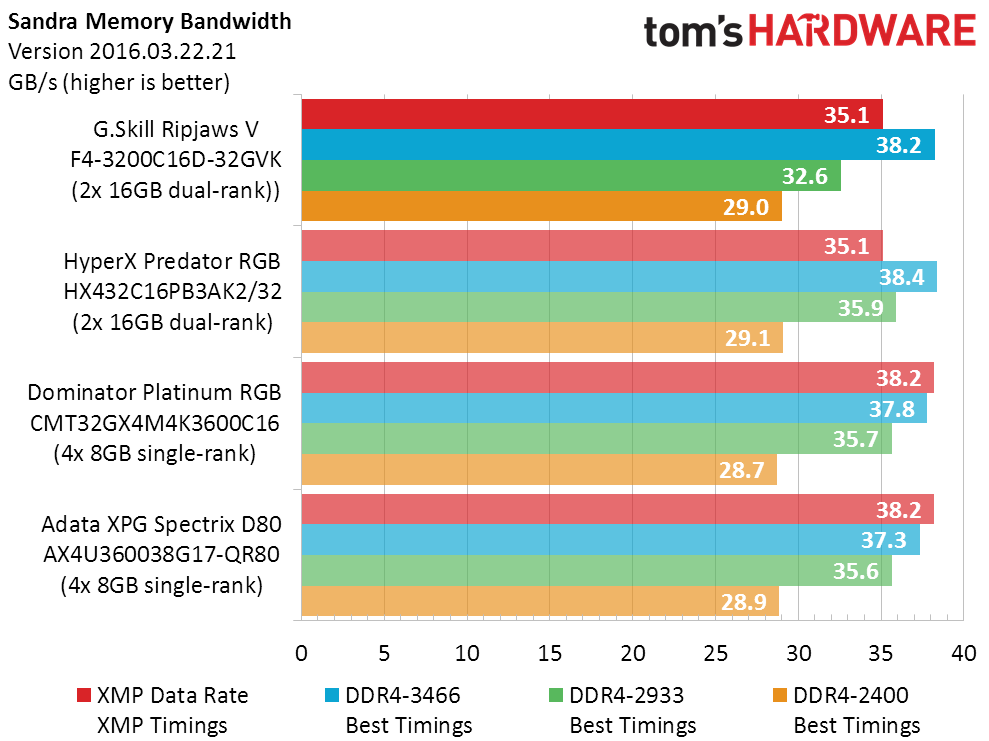
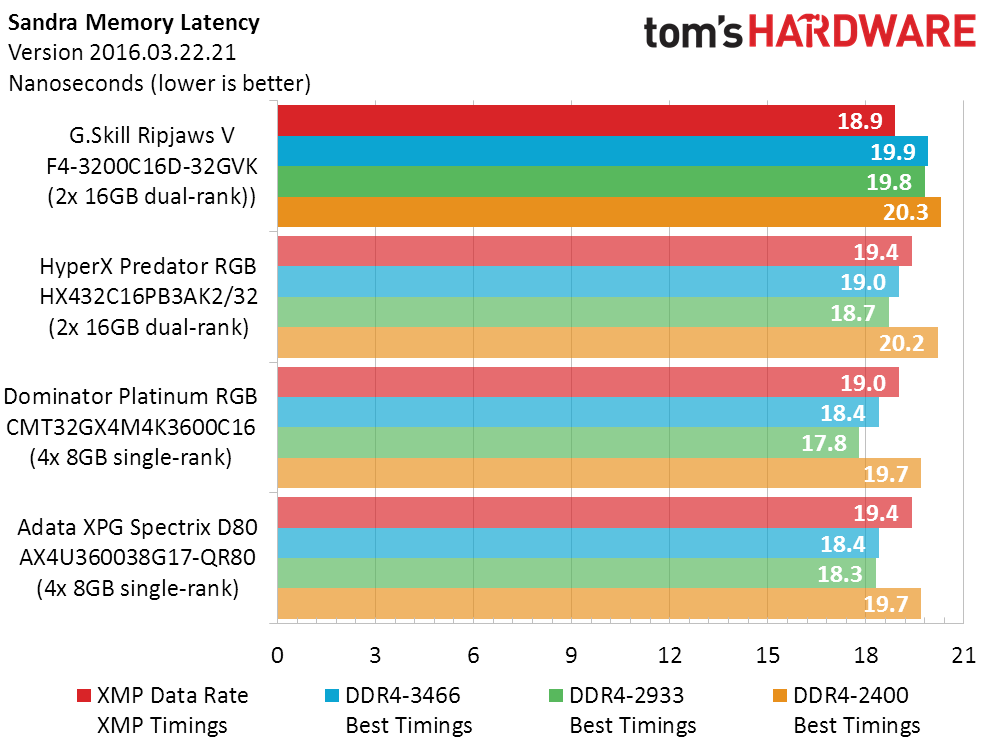
Even though it had two more cycles of tRAS in its XMP timing set, the Ripjaws V matched the Predator RGB’s XMP in Sandra Bandwidth. The Ripjaws XMP even undercut that of the Predator RGB in Sandra Latency, though its other settings appear pretty dire in this comparison. The G.Skill kit appears to be spec’d closer to its memory’s actual limits.
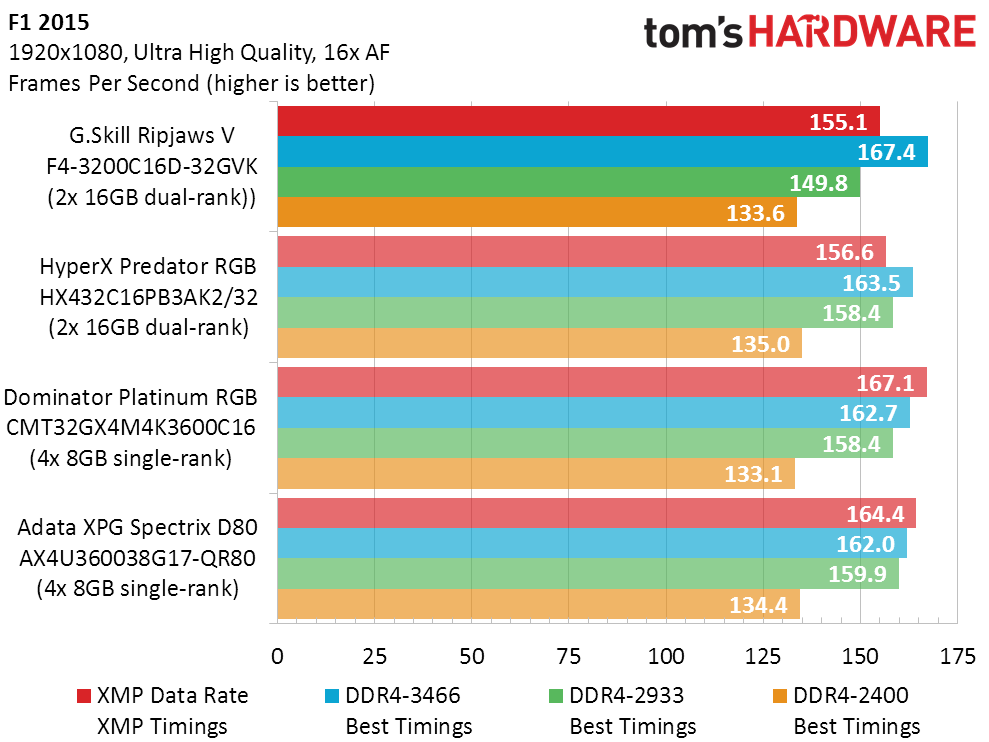

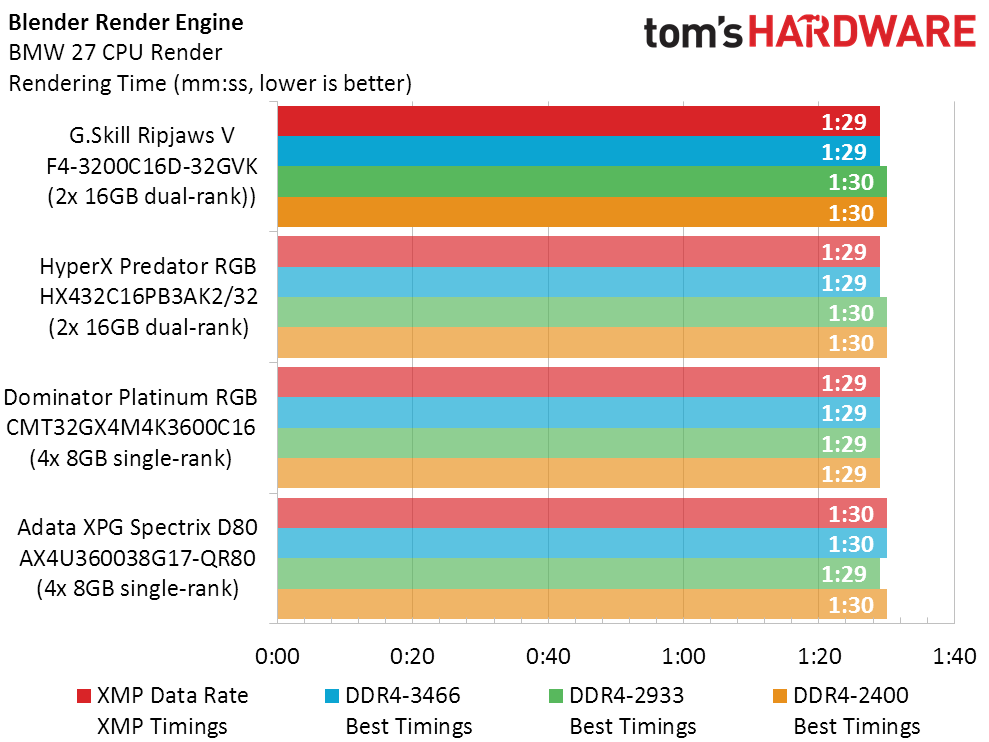

We can’t think of any reason why the Ripjaws V DDR4-3466 setting lead FPS in F1 2015, but it certainly trailed in 7-Zip. Conversely, it’s XMP setting led that of the Predator RGB kit in 7-Zip, but trailed slightly in F1 2015.
Final Analysis
Overall, the Ripjaws V’s XMP settings edged out those of the more-expensive Predator RGB, but the Predator RGB was more tweakable. And while the Predator RGB had far more room for overclocking and optimization than the Ripjaws V, buyers of the RGB kit must first be willing to pay for its slightly-better chips, fancier heat spreaders, and flashy RGB lighting.
As of this writing, the price difference between Ripjaws V and Predator RGB is more than $50, and we can’t justify anyone paying $50 just to have RGB lighting on their memory. While builders might use the Predator RGB’s overclocking headroom and the component quality it implies as a tradeoff against its added cost, value seekers should favor the cheaper Ripjaws V kit.
Photo Credits: Tom's Hardware
MORE: Best Memory
MORE: DDR DRAM FAQs And Troubleshooting Guide
MORE: All Memory Content
-
CountMike It's pro as far as I'm concerned, everybody is int RGB and lights even for rarely seen components.Reply -
Crashman Replynrdwka said:Lately, tomshardware became weird, every time calling lack of rgb as cons:cautious:
There you go. Not having RGB is a con when you're paying for it and not getting it, which has been the pricing scheme for some high-end modules. Not having RGB is a pro when you don't want it and don't have to pay for it.CountMike said:It's pro as far as I'm concerned, everybody is int RGB and lights even for rarely seen components. -
Crashman Reply
BTW:nrdwka said:Lately, tomshardware became weird, every time calling lack of rgb as cons:cautious:
Pros
Inexpensive for its XMP setting
No lighting to annoy the anti-RGB crowdYour complaint is invalid. -
Slesreth G.SKILL TridentZ Series 32GB (2 x 16GB) 288-Pin DDR4 SDRAM DDR4 3200Reply
I would argure all prior pro/con arguments are invalid concerning the G.Skill Ripjaws V.
The G.Skill TridentZ is $355 at Newegg & Amazon - CAS/RAS 14-14-14-34 & tRC 75 - 1T - 1.35v Tested XMP 2.0; it is cheaper and faster. One is not getting charged for RGB that isn't there either.
For personal use I have set these timings and tested them manually as well as using the XMP profile. So the con for G.Skill Ripjaws V "Little tuning capability" would be a pro on the TridentZ as "Moderate tuning capability"
From my perspective their are no pros for the G.Skill Ripjaws V at all as long as the TridentZ is available.
Edit 6:30 CDT: Prices reflect market place sellers with 500 or more reviews and rated at 94% or higher. In all fairness. -
Crashman Reply
The Ripjaws V is only $155 at Newgg.Slesreth said:G.SKILL TridentZ Series 32GB (2 x 16GB) 288-Pin DDR4 SDRAM DDR4 3200
I would argure all prior pro/con arguments are invalid concerning the G.Skill Ripjaws V.
The G.Skill TridentZ is $355 at Newegg & Amazon - CAS/RAS 14-14-14-34 & tRC 75 - 1T - 1.35v Tested XMP 2.0; it is cheaper and faster. One is not getting charged for RGB that isn't there either.
For personal use I have set these timings and tested them manually as well as using the XMP profile. So the con for G.Skill Ripjaws V "Little tuning capability" would be a pro on the TridentZ as "Moderate tuning capability"
From my perspective their are no pros for the G.Skill Ripjaws V at all as long as the TridentZ is available.
Edit 6:30 CDT: Prices reflect market place sellers with 500 or more reviews and rated at 94% or higher. In all fairness.
Only $155 at Newegg
I can't take flak for the error in the "buy button". Well, I mean I can pass along the sentiment but I can't let it rest with me ;)
